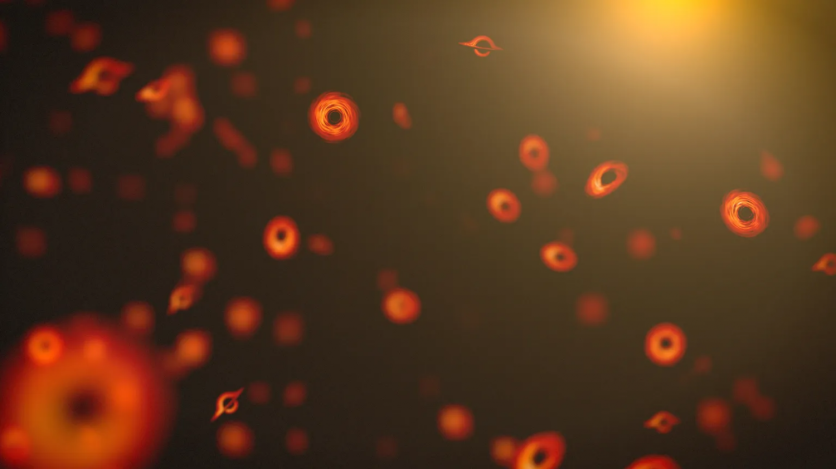NASA's Roman Space Telescope is gearing up for an unprecedented mission: hunting for elusive primordial black holes, a class of cosmic entities that have largely remained beyond the reach of modern detection methods.

The Search for Primordial Black Holes
In a recent study led by William DeRocco from the University of California Santa Cruz, scientists speculated that the Roman Telescope might be able to unveil a previously hidden population of what they term "featherweight" black holes.
These are different from the colossal black holes observed thus far, ranging from just a few times the mass of our Sun to tens of billions of solar masses.
Researchers find the idea of detecting such lightweight black holes particularly tantalizing. DeRocco himself emphasized the significance of this potential discovery, highlighting that finding Earth-mass primordial black holes would defy conventional physics wisdom.
Unlike the black holes commonly known to form from massive stars collapsing or merging, primordial black holes are hypothesized to have originated during the chaotic early moments of the early universe.
Black Holes as Small as the Earth
The prevailing belief is that these minuscule black holes, potentially as small as the Earth, were born under the unique circumstances of the universe's inception.
NASA notes that the conventional process for black hole formation demands a star with at least eight times the mass of our Sun to exhaust its nuclear fuel and subsequently collapse under gravitational forces.
However, conditions were different in the primordial scenario, possibly allowing for the creation of black holes with masses more akin to those of our planet.
The proposed mechanism suggests that regions denser than their surroundings during the universe's inflationary phase could have collapsed to spawn these cosmic phenomena.
Although primordial black holes remain invisible to direct observation, astronomers have inferred their existence through subtle disturbances in spacetime known as microlensing effects.
Microlensing is a pivotal technique in the pursuit of primordial black holes. This observational phenomenon occurs when a mass distorts spacetime, causing light from distant stars to bend and magnify as it passes by.
Recent observations by groups like MOA (Microlensing Observations in Astrophysics) and OGLE (the Optical Gravitational Lensing Experiment) have hinted at an unexpectedly abundant population of Earth-mass celestial bodies traversing our galaxy, potentially including primordial black holes.
Read Also : NASA Roman Space Telescope's Eyes Are One Step Closer to Peering Through the Galaxy's Mysteries
Roman's Mission to Hunt Primordial Black Holes
The upcoming Roman Telescope promises a significant upgrade in observational capabilities. Unlike ground-based observatories, Romans are expected to discern roughly ten times more objects falling within the Earth-mass range, aiding astronomers in differentiating between rogue planets and primordial black holes.
"There's no way to tell between Earth-mass black holes and rogue planets on a case-by-case basis," DeRocco said in an official statement. "Roman will be extremely powerful in differentiating between the two statistically."
The findings of Rocco's study were published in the journal Physical Review D.
Related Article : The First Non-Americans to Land on the Moon Will be Japanese as NASA, JAXA Sign Agreement for Lunar Rover

![Apple Watch Series 10 [GPS 42mm]](https://d.techtimes.com/en/full/453899/apple-watch-series-10-gps-42mm.jpg?w=184&h=103&f=9fb3c2ea2db928c663d1d2eadbcb3e52)



